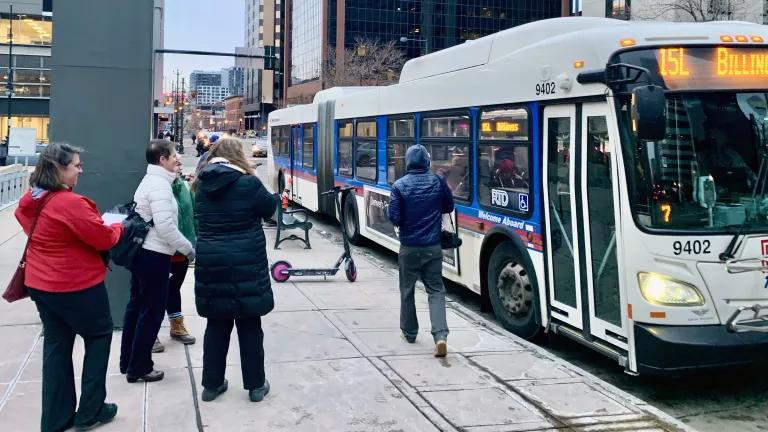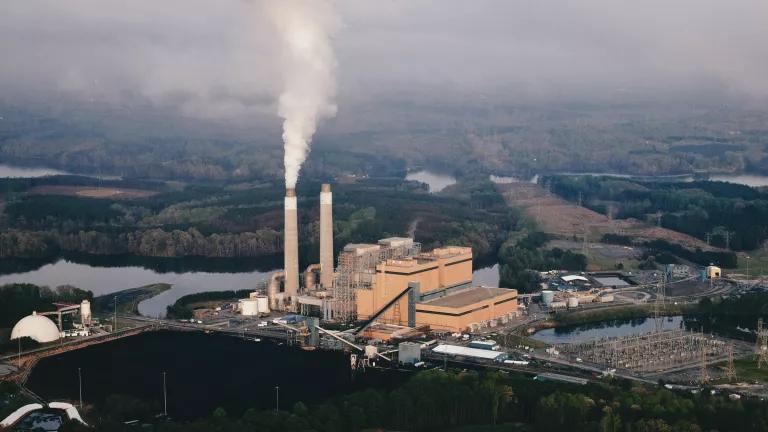IPCC: The Future of Our Climate Is the Future of Our Forests
I’ve spent over a decade working on climate change and I’ll be honest, the last two weeks have been gut-wrenching. At this point, if you’re reading this blog, you’re likely aware that the Intergovernmental Panel on Climate Change (the IPCC) issued a report on limiting global warming to 1.5 °C, which was either terrifying if you’re a pessimist or hopeful if you’re an extreme optimist. If, like me, your emotional response is to square your shoulders and figure out where to focus your personal and/or professional advocacy in the critical years to come, I’d like to offer a back to basics pitch: Save Our Forests.
The IPCC said a great many things in their sobering report. But the topline message was that staying within a 1.5°C rise in global temperatures is both much safer for us and will be extraordinarily challenging, requiring "rapid, far-reaching and unprecedented changes in all aspects of society." To get there, manmade CO2 emissions must decline by about 45% from 2010 levels by 2030 and reach net zero by midcentury. For a more recent touchstone, think back to our society, economy, and energy system just two short years ago. We’ll need to slash emissions by roughly half from those 2016 levels in a little over ten years to be on track.
Even half a degree of excess warming beyond that means dramatically more extreme weather, more sea level rise, more species extinctions and more human suffering on a scale that’s hard to wrap your brain around. Under current policies, we are headed for a significant overshoot of 1.5 degrees.
The IPCC offers many solutions, and underscores that there is still time to implement them, though not much. These solutions are packaged into four modeled scenarios, each meant to illustrate a different pathway for staying below 1.5 degrees. Most notably, the report’s most hopeful scenario features dramatic investments in energy efficiency, an immediate re-examination of fossil fuel infrastructure and the likely cancellation of under-construction and planned coal plants, gas plants, pipelines and other carbon-emitting assets, as well as massive investments in renewable energy. It also, correctly, identifies large-scale “afforestation” (a fancy word for planting trees on unused land) and “reforestation” (a fancy word for returning land that was once deforested back into forests) as a way to actively remove CO2 that’s already in the atmosphere in parallel to all the other efforts to bring new emissions down to zero.
While the IPCC’s climate science is unassailable, its scenarios unfortunately include the continued clearing of forests in the name of “green energy”—a practice often referred to as “biomass” or “bioenergy.” Bioenergy can take many forms, from the use of plants to produce liquid fuel that replaces gasoline in cars, ships, and airplanes, to the use of wood chips for heating, to most egregiously, large-scale subsidy schemes that support the conversion of industrial-scale power plants to burn trees instead of coal. Here’s what that looks like in the bottomland hardwood forests of the U.S. Southeast, just one part of the globe where trees are being turned into wood pellets for use as fuel in power plants.
While much attention has [rightly] been paid to the extreme risks associated with dependence on the large-scale future use of bioenergy with carbon capture and storage, known as “BECCS,” to remove CO2 from the atmosphere, as modeled in some of the IPCC’s illustrative scenarios, (including an excellent post by my colleague that digs into why this would be both ecologically disastrous and unlikely to help with climate mitigation), we must recognize that standalone bioenergy production today is a clear and present threat to any last gasp hope we have of avoiding the worst consequences of climate change.
That’s because the world’s forests are both a giant pool of carbon—in fact, they contain more carbon than all our known exploitable deposits of oil, gas, and coal—and a critical weapon in the fight against climate change, sucking up over one-quarter of the carbon dioxide humans add to the atmosphere each year. According to scientists, avoiding forest carbon emissions is just as urgent as halting fossil fuel use.
When a forest is cleared and burned for energy, just like when we build a giant smokestack, all the carbon it has stored over many years is immediately released to the atmosphere. In addition, once a forest is cut, we forego the future carbon sequestration it would provide were it to be left standing. Sure, trees can be replanted, but when we replace older trees with younger trees, we diminish the forest carbon sink for a very long time.
Critically, the process of forest clearcutting also releases enormous pools of carbon that are locked in forest soils, particularly in intact forests. In intact forests like the Canadian boreal, these soil carbon pools can exceed the carbon locked up in the trees themselves by many multiples. Again, disturbing these “terrestrial” carbon pools and releasing that CO2 is just like building giant smokestacks from the perspective of the atmosphere. Our global forest carbon sink is so massive that even small tips in the balance between the terrestrial carbon pool and atmospheric carbon pool can make a big difference.
Unfortunately, in an effort to move away from burning fossil fuels, many policymakers and policymaking bodies have bought into biomass as a climate solution. The simplistic logic has gone as follows: trees can grow back, so if you turn trees into a fuel, you can assume that fuel is “carbon neutral.” This fallacy has since been enshrined into energy policies around the world, essentially allowing countries to launder their dirty destruction of forest carbon sinks through their energy sectors, where CO2 emissions from burning trees magically count as zero—on par with genuine clean energy like solar and wind.
In reality, many forms of biomass energy are enormously harmful to forests, incentivizing their degradation and conversion to plantations, and in doing so greatly reduce their ability to continue to suck up massive amounts of carbon (and provide critical ecosystem services, like flood protection, clean water filtration, and habitat for countless plants and animals). Because of that, replacing fossil fuels with biomass increases CO2 emissions to the atmosphere in many cases for decades or more, even compared to coal or natural gas. The IPCC just told us that the next ten years are the most crucial. We do not have that time to lose in this fight.
We’ve just had a big wake-up call, and many people around the world are still grappling with deep-seated anxiety, fear, and grief about what the IPCC report means for our families and communities, and communities around the world. I’m not here to tell anyone to respond by hugging a tree. But I am here to say that as go our forests so goes our climate. Addressing climate change will require a new conversation around our global forests. Rather than using them for fuel or throwaway products, we must redouble our efforts to protect forests, evaluate new ways to safeguard their capacity to hold onto the carbon they’ve locked in their soils and vegetation, and enhance their ability to sequester CO2 from the atmosphere.
We will not stay below 1.5 degrees if we do not Save Our Forests. And I’ll put a finer point on that: we will not stay below 1.5 degrees unless we recognize that forests are our best tool for reducing carbon pollution and implement aggressive programs to protect, restore and expand them, and put an immediate end to subsidies and other policy incentives that encourage meeting our energy needs with heavy reliance on burning forests for fuel.


